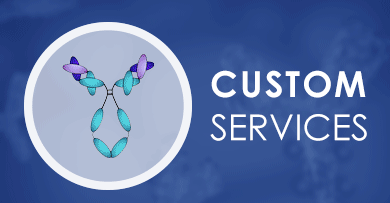 Loading...
Loading...

EPHA2
Anti-EPHA2 Recombinant Antibody Products
- Anti-EphA2 receptor (1C1)-vcMMAE ADC (ADC-113LCT)
-
- Target: EphA2 receptor
- Linker: Mc (maleimidocaproyl)
- Drug: MMAF (Monomethyl auristatin F)
- Anti-EphA2 (clone 1C1)-mc-MMAF ADC (ADC-028LZY)
-
- Target: EphA2
- Linker: mc (maleimidocaproyl)
- Drug: MMAF (monomethyl auristatin F)
- Anti-EhpA2 (1C1)-Mc-MMAF ADC (MEDI-547) (ADC-L023)
-
- Target: EhpA2
- Linker: Mc (maleimidocaproyl)
- Drug: MMAF (Monomethyl auristatin F)
Can't find the products you're looking for? Try to filter in the left sidebar.Filter By Tag
Our customer service representatives are available 24 hours a day, from Monday to Sunday. Contact Us
For Research Use Only. Not For Clinical Use.

Cancer-related genes, Disease related genes, Enzymes, FDA approved drug targets, Human disease related genes, Metabolic proteins, RAS pathway related proteins
Membrane
Cell type enhanced (Suprabasal keratinocytes, Basal keratinocytes, Urothelial cells, Glandular and luminal cells, Squamous epithelial cells)
Immune cell enriched (plasmacytoid DC)
Cell line enhanced (CAPAN-2, PC-3, U-251 MG, WM-115)
Homodimer. Interacts with SLA. Interacts (phosphorylated form) with VAV2, VAV3 and PI3-kinase p85 subunit (PIK3R1, PIK3R2 or PIK3R3); critical for the EFNA1-induced activation of RAC1 which stimulates cell migration (By similarity). Interacts with INPPL1; regulates activated EPHA2 endocytosis and degradation. Interacts (inactivated form) with PTK2/FAK1 and interacts (EFNA1 ligand-activated form) with PTPN11; regulates integrin-mediated adhesion. Interacts with ARHGEF16, DOCK4 and ELMO2; mediates ligand-independent activation of RAC1 which stimulates cell migration. Interacts with CLDN4; phosphorylates CLDN4 and may regulate tight junctions. Interacts with ACP1. Interacts (via SAM domain) with ANKS1A (via SAM domain). Interacts with CEMIP. Interacts with NCK1; may regulate EPHA2 activity in cell migration and adhesion. Interacts with TIMD4 (PubMed:34067457). (Microbial infection) Interacts with human herpes virus 8/HHV-8 glycoprotein L/gL and glycoprotein H/gH heterodimer; this interaction triggers EPHA2 phosphorylation and endocytosis, allowing virus entry. (Microbial infection) Interacts with Epstein-Barr virus/HHV-4 glycoprotein L/gL and glycoprotein H/gH heterodimer; this interaction facilitates virus internalization and fusion.
Host cell receptor for virus entry, Kinase, Receptor, Transferase, Tyrosine-protein kinase
